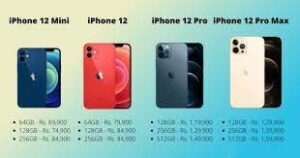Product marketing is an important part of engaging consumers and improving sales performance. Price lining is a way to create product lines that target specific consumer groups for increased marketing efficiency. Understanding what price lining is and reviewing some examples may help you implement it in your product development and marketing processes.
In this article, we define price lining and provide some of its pros and cons.
What is the price lining?

Price lining is a retail marketing strategy that companies use to optimize their product development, manufacturing and sales. When companies begin developing a product, they might implement a price-lining strategy for creating product variations that feature different functions to target specific consumer groups.
With each variation, companies can change the pricing for the same product while marketing it for its range of features. A company can capture a wide consumer base with price-lining strategies.
5 pros of price lining
Consider the following benefits of using price-lining strategies to improve your sales performance:
1. Presentation
A product lineup presents consumers with the range of product variations available to demonstrate each variation’s specific features and price points. This allows consumers to create direct comparisons between each variation and determine which one best suits their product needs or wants. Presenting the available product values shows the consumer the value of the additional feature and can encourage them to buy a higher-priced item for its quality.
2. Pricing
When developing a product, developers consider the cost of production, product features and competitor businesses to determine a suggested retail price for consumer sales. A price-lining strategy with one base product can make pricing decisions easier than setting a pricing strategy for a set of different products altogether.
Setting the price differences based on features and quality enables the company to add a sense of value while establishing a diverse consumer base for those with different financial or personal needs.
3. Production
Companies can monitor the performance of each product variation to compare which ones generate the highest returns on investment. Using this insight, a company might choose to discontinue a specific item in its lineup to reduce production costs. Removing an item from the production lines can save resources, reduce costs and increase profit margins for overall improved company performance.
4. Profits
Along with reducing production costs, price lining can optimize external marketing and advertising resources by minimizing the need for them. A price-lining strategy can effectively market a product to different audiences in one product advertisement or campaign, rather than several, separate campaigns for each item. Doing this can further improve profit margins while increasing sales performance.
5. Purchases
When retail stores display a product lineup, they organize them according to their product category and price-lining specifications. The visual representation of the products allows customers to visually understand the value of the pricing differences in the product features and quality.
Having the products organized in this method, customers may have an easier time identifying the product they need and making the decision to purchase the product without recommendations from a sales associate.
3 cons of price lining
Here are the drawbacks of price lining to consider when developing sales strategies and solutions:
1. Fluctuation
The economy and product markets may change without notice and create inflation. This can create a disadvantage for the higher-priced products in a lineup and result in an overstock of inventory. These fluctuations may be a challenge to predict, but you can prepare for potential changes when developing a product and its pricing strategies to minimize the effect of market fluctuations.
2. Focus
Price lining is a strategy only focused on pricing. This more narrow focus allows it to be as accurate as possible for its purposes but may narrow product development efforts on the price of the result. It’s important to consider market trends, consumer behavior and the economic climate throughout the entire production process.
3. Forecasting
Forecasting a product’s performance is an important part of developing sales goals, return on investment analysis and consumer engagement strategies. Price lining’s focus on price alone can hinder forecasting accuracy and outcomes. Regularly evaluate historical, current and competitive performance to develop thorough forecasting reports and plan for product updates or new developments.
Examples of price lining
These are some examples of price-lining product lineups to help you understand:
Apparel
Within a clothing line, designers might use price-lining strategies throughout an entire collection. Shirts may have the same structural style and manufacturing while using a different textile. Higher quality textiles or more in-demand prints may receive higher price points.
Cars
Car manufacturers typically have a few categories of automotive vehicles, such as sedans, hatchbacks or coupes. These manufacturers may create a car within a specific category and release different levels of capability for it. Some features that may increase vehicle prices include all-wheel drive, hill start assistance, blind-spot monitors, adaptive cruise control or heated seats and steering wheels.
Drinks
A beverage company might use price-lining strategies in their drink lines, from powdered drinks to soft drinks. Soda companies often have several variations of their drinks to target specific consumer audiences. A soft drink might have versions including diet, zero-calorie, zero sugar, extra caffeine or other flavors to capture a wide customer base and following for a single product.
Furniture
Furniture companies can specialize in manufacturing a specific furniture type such as bed frames, couches or recliners. A company might release a recliner with different fabrics or features. Some recliners may have cup holders, heated seats or charging ports.
Phones
Cell phone and other technology developers use price-lining strategies to optimize their devices for particular consumer categories such as those that use technology for educational, entertainment or professional use.
Phone product lineups may have larger versions for those who might use their phone for reading or watching videos. Other phones in a lineup may have additional cameras or camera tools for those who might require high-quality images for personal or professional purposes.
I hope you find this article helpful.
Leave a Reply